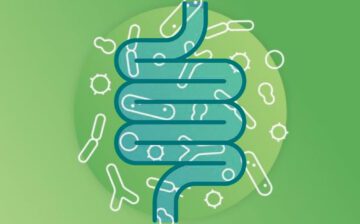
What is the Microbiome?
Our body is inhabited by trillions of bacteria, fungi, and viruses which collectively live on and in our body as a community known as microbiota. Their genome is the microbiome.

Over the past three decades, the prevalence of type 2 diabetes (T2D) has risen drastically worldwide. Resulting from defects in both insulin secretion and insulin action, this chronic condition, when improperly treated, can cause serious and debilitating complications. Adopting a healthy diet, being physically active, and maintaining a normal body weight are some of the strategies to prevent or delay the onset of T2D.
The effect of specific nutrients and/or foods, including dairy, on blood glucose regulation has been the object of a large body of research. Milk components, such as whey protein, have been shown to have a beneficial effect on insulin secretion. The effect of dairy consumption on the risk of T2D, however, is less clear.
Alvarez-Bueno and colleagues attempted to shed light on the association between dairy products and the incidence of T2D in their recent overview of systematic reviews and meta-analyses published in the Journal of Advances in Nutrition. The authors included 12 meta-analyses, published between 2008 and 2017, reporting on total dairy intake and/or specific dairy subgroups (e.g. milk, yogurt, cheese). These studies contain data from 4-22 cohort studies with participants and cases of T2D ranging from 64,227-566,875 and 4810-44,474, respectively. When comparing T2D risk for high versus low total dairy intake, an inverse correlation was seen in 85.7% of the studies (Risk Ratio (RR) range: 0.86-0.91). Similarly, an inverse relationship for low-fat dairy and yogurt was found in all analyzed studies (RR range: 0.81-0.83 and 0.74-0.86, respectively). A correlation between T2D risk and the consumption of fermented dairy products (1 of 2 studies, RR: 0.88; 95% CI: 0.79, 0.98) and cheese (2 of 4 studies, RR: 0.82; 95% CI: 0.77, 0.87 and RR: 0.91; 95% CI: 0.82, 0.98) was also observed. On the other hand, none of the studies showed a significant relationship between high-fat dairy products and T2D risk. When looking at total milk consumption, three studies (60%) showed a significant association (RR range: 0.85-0.92). This association, however, was stronger for low-fat milk than for high-fat milk. Dose-response analyses revealed a significant decrease of T2D risk with 200-400 g/d of total dairy product intake (4 of 5 studies, RR: 0.93-0.97) and with 200 g/d of low-fat dairy product (3 of 4 studies, RR range: 0.88-0.91).
Overall, findings from Alvarez-Bueno and colleagues suggest that total dairy product intake is inversely correlated with the incidence of T2D, the evidence being stronger with the consumption of yogurt and low-fat dairy products. Conversely, no or marginal evidence of a relationship was found with high-fat dairy foods. However, as with all findings based on observational studies, no conclusion on causation can be drawn. Nevertheless, understanding the health impact of the food we consume is essential in establishing dietary recommendations to help prevent or mitigate T2D.
Reference: Alvarez-Bueno C, Cavero-Redondo I, Martinez-Vizcaino V, Sotos-Prieto M, Ruiz JR, Gil A. Effects of milk and dairy product consumption on type 2 diabetes: overview of systematic reviews and meta-analysis. Adv Nutr 2019; 10: S154-S163.
For a yogurt application recipe, click here.
Disclaimer: Information discussed in this blog is based on the above-mentioned published research article and represents the thoughts, views and opinions of the authors of the article.